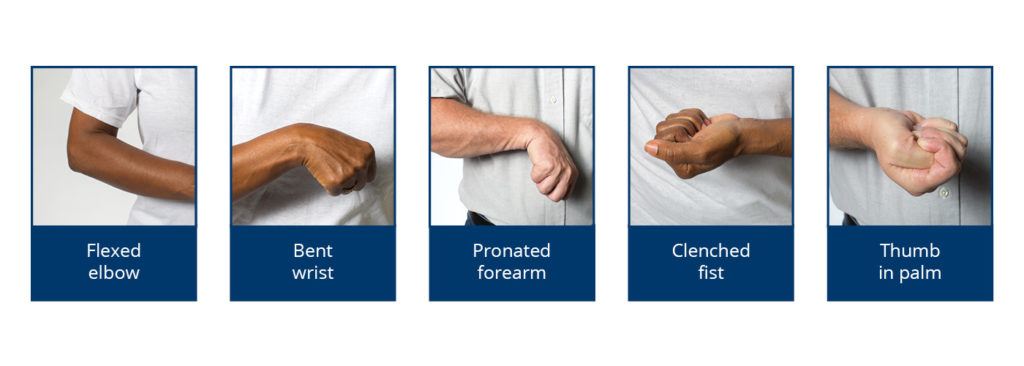

5 Ways To Avoid Spasticity
by Amelia Garrison
What is spasticity?
Spasticity refers to inability of the muscle to relax, and is the experience of abnormal, prolonged muscle stiffness, which can cause involuntary spasms or movements, abnormal posture, or difficulty walking.

Spasticity is a neurological condition where there has been damage to areas of the brain or spine that help control muscle and stretch reflexes. Causes of spasticity include traumatic brain injury, spinal cord injury, stroke, multiple sclerosis, and cerebral palsy.
Symptoms include muscle contractions (tightness) and spasms; difficulty speaking and walking; and inability to perform daily activities. If left untreated, spasticity may cause bone deformity, contractures (permanent contraction of muscles), and disability.
> Learn more about symptoms and treatment of spasticity.
How can I avoid spasticity symptoms?
Dr. Natalie Diaz, a board-certified neurologist at the Pacific Movement Disorders Center at Pacific Neuroscience Institute (PNI), discussed five ways to avoid spasticity symptoms and flare-ups.
1. Excessive Temperature
Cold weather can affect the communication between the nerves and muscles, making spasticity worse. Get out of the cold weather and try to warm up to avoid spasticity. Extreme heat can also worsen muscle spasms. To prevent muscle spasms, avoid excessive heat when possible.

2. Fatigue
Poor sleep and fatigue can worsen spasticity, and increased muscle spasms can impair sleep. Botulinum toxin injections may help calm spasticity that keeps sufferers up at night.
3. Stress
Stress puts strain on the brain and takes focus away from muscle relaxation. This can make spasticity worse. Practice stress management and, if needed, speak to a therapist to reduce stress and avoid spasticity.
4. Infections
Symptoms of spasticity become worse during infection, such as a urinary tract infection. This is because the body focuses more on the acute problems at hand, taking away resources from what the body normally does on a daily basis. Seek medical attention if you suspect you have an infection.
5. Constipation
Constipation can interfere with symptoms of spasticity. If you experience discomfort or pain from constipation, you’ll focus more on the pain and less on muscle relaxation and coordination. If you are experiencing constipation, talk to your doctor about constipation management.
Read the full article on Prevention.com.
More information: 424-212-5361
About Dr. Natalie Diaz

Dr. Natalie Diaz is a board-certified neurologist with fellowship training in movement disorders. Her clinical practice focuses on the evaluation and management of patients with a wide array of movement disorders including Parkinson’s disease, atypical parkinsonian disorders, Huntington’s disease and other choreiform disorders, spasticity, dystonia, and ataxia.
Related Links:
About the Author

Amelia Garrison
Amelia Garrison is the Marketing Specialist at Pacific Neuroscience Institute (PNI). Well versed in community outreach strategy and implementation, she leads the PNI blog, newsletter, and digital communications. Amelia oversees PNI's reputation management and community sponsorships.
Last updated: December 13th, 2021